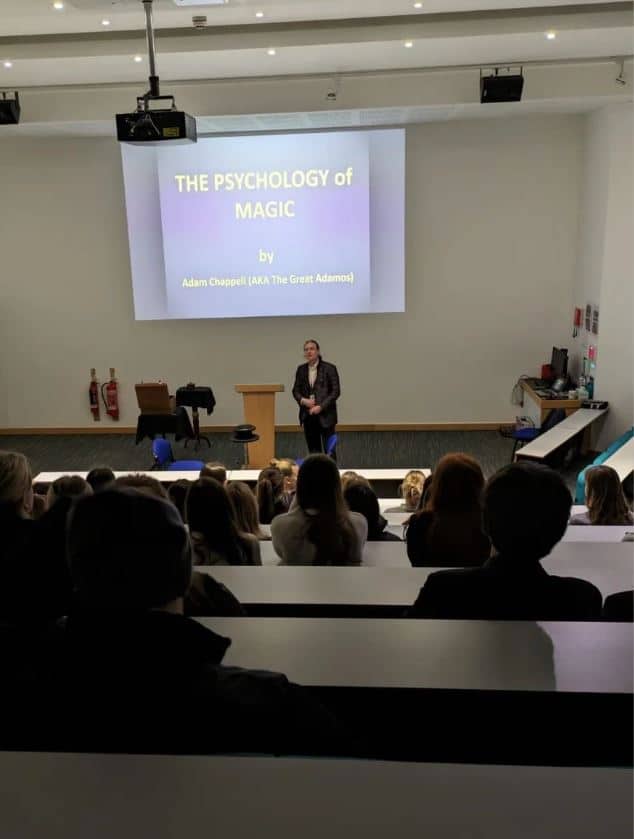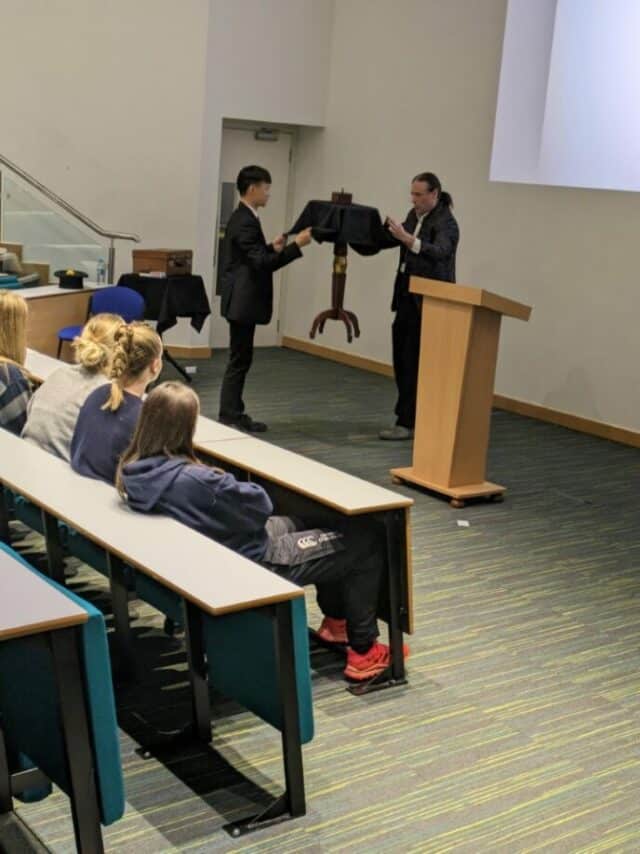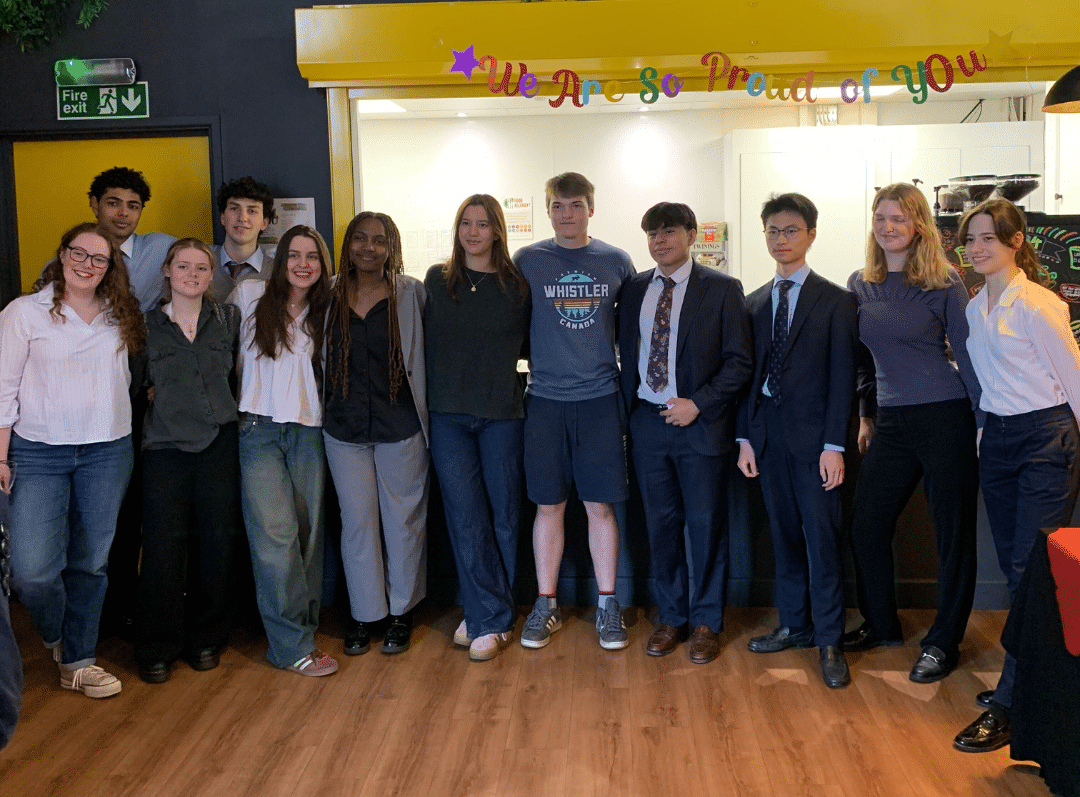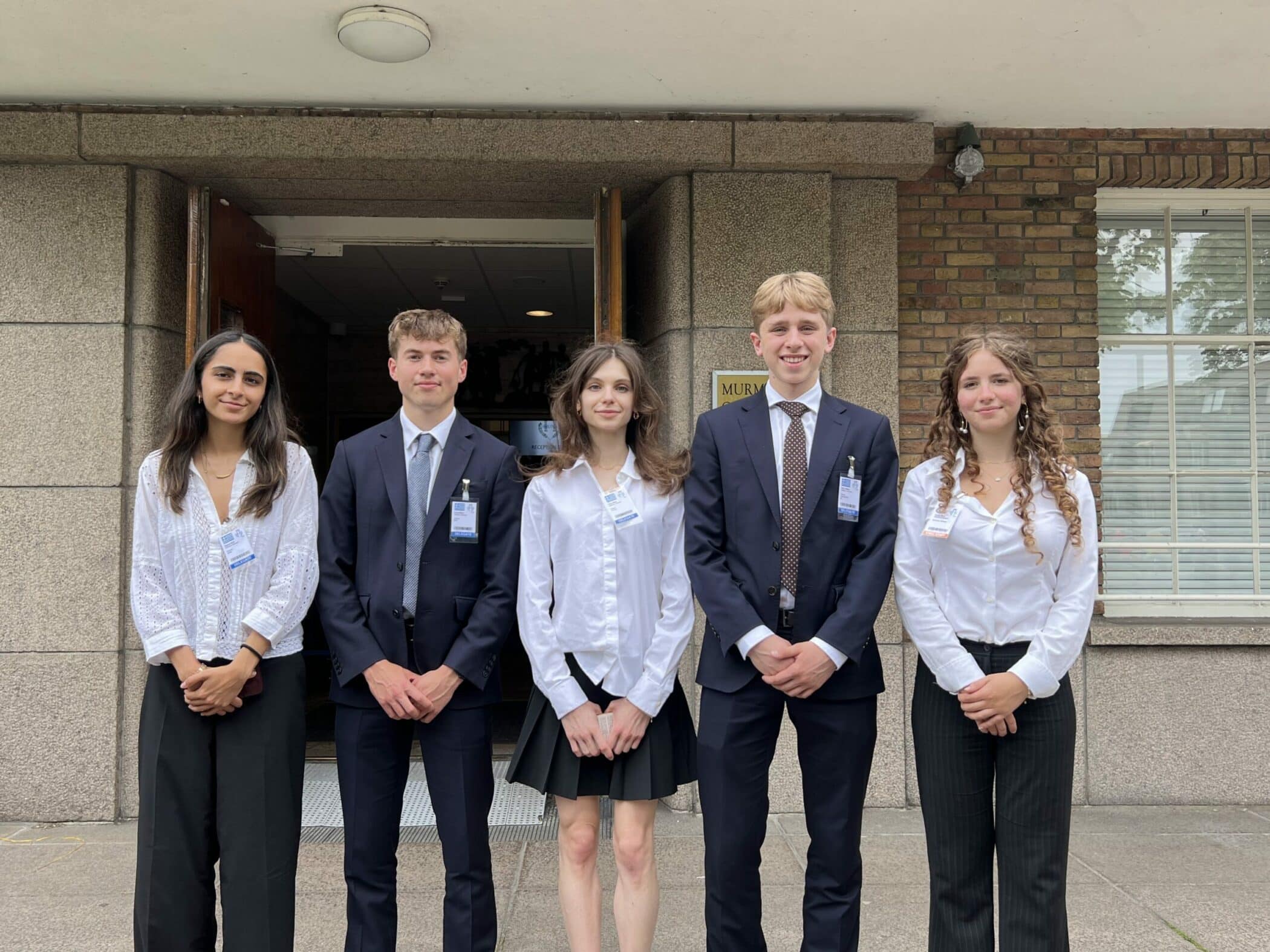
This Psychology Torch Lecture saw The Great Adamos share insights into the Psychology behind Magic, here is a brief insight into the show that tries not to reveal a Magician’s secrets – you really needed to see the magic with your own eyes!
Within the first five minutes of the show, red balls had appeared from seemingly nowhere and a glass of water (with a slice of lemon) was pulled out of a folded white paper bag – students and staff were hooked. Adamos began by explaining the similarities between Psychology and Magic in that we are both observing participants, with magicians using Classical Conditioning, inattentional blindness and knowledge of human memory to enable their tricks. The concept of Dual Processing was introduced to explain the basic premise behind a magician’s work. This explains that our thinking can be broken into two systems. System one is fast, intuitive, requires little cognitive effort and is prone to errors whereas system two is slower, consciously aware of its surroundings and allows us to make complex decisions considering the consequences and outcomes. One of these systems is played upon by magicians to encourage misdirection, but I’ll let you figure that out. A final discussion on crowd psychology enabled students to refresh their knowledge of Normative Social Influence and Compliance whilst understanding the underlying mechanics of magic and the importance of having the audience on board.
The first two volunteers experienced the classic multiplying sponge ball trick where one red ball was turned into five or six by the end of the trick as they kept appearing from student’s hands. Despite an explanation, the look of shock really showed the beauty of magic. The second group of volunteers experienced card tricks, with Adamos able to ‘guess’ the correct cards students had chosen. A further explanation and break-down of the trick in slow-motion allowed us to understand the subtle elements to the trick, but still left us in shock when Adamos pulled out a card from his wallet, with the student’s name, her chosen 4 of diamonds with the Oakham School logo on the back of the card! An amazing trick that led to a practical discussion around the illusion of free will, and with barely insight into how he executed his reveal. Two more volunteers joined the stage for cup and ball tricks, in which they studiously watched the cups and his hands for quick movements. Nothing could prepare us for the lemon and lime that appeared under the cup, and the students are adamant they saw nothing.
Lastly, an explanation behind mindreading tricks fascinated us all, which were incredibly obvious and logic (once explained). Adamos was able to perfectly demonstrate what happens when a trick doesn’t go to plan and how to rectify this without the audience knowing – or perhaps this is what we were led to believe!? The final trick left all students questioning magic as Adamos and our final volunteer made a table fly around the Wilson Auditorium. Speechless!






